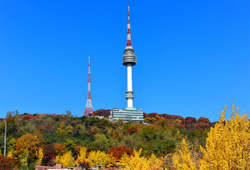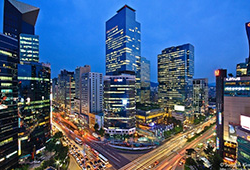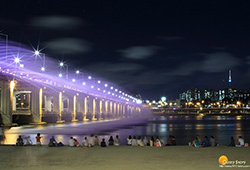About Seoul
About Seoul
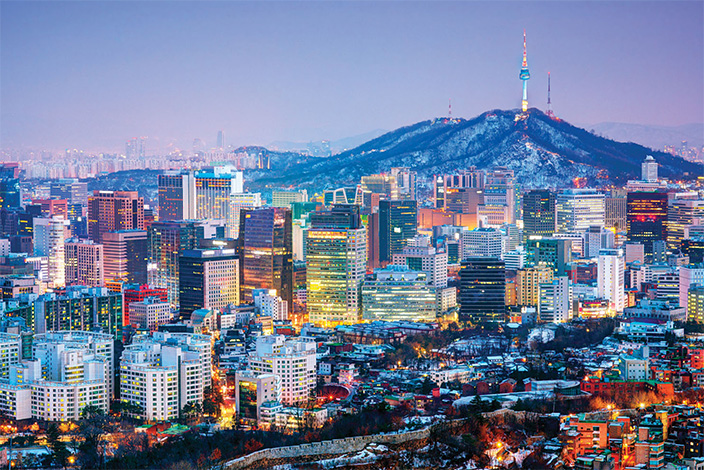
Seoul has been the capital of Korea for about 600 years since the time of the Joseon Dynasty (1392-1910). Seoul was referred to as "Han Yang" during the Joseon Dynasty, but after the liberation from Japan in 1945, the newly founded Republic of Korea officially changed its capital city's name to Seoul. Seoul has developed into a bustling metropolis, acting as the hub for political, economic,social and cultural matters. The Hangang River runs through the heart of the city. The river divides the city in two; the northern part of the city is a focal point for culture and history, while the southern part is well known for its business district.

- Myeongdong
- Myeong-dong is one of the primary shopping districts in Seoul. The two main streets meet in the center of the block with one beginning from Myeong-dong Subway Station (Seoul Subway Line No. 4) and the other from Lotte Department Store at Euljiro. Many brand name shops and department stores line the streets and alleys. Common products for sale include clothes, shoes, and accessories. Unlike Namdaemun or Dongdaemun, many designer brands are sold in Myeong-dong. In addition, several major department stores have branches here, including Lotte Department Store, Shinsegae Department Store, Myeong-dong Migliore, Noon Square and M Plaza. The department stores carry many premium labels and other fashionable goods at reasonable prices.
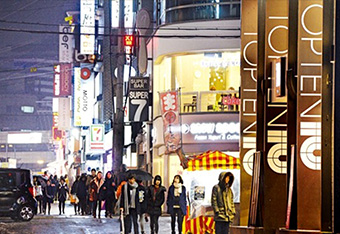
- Itaewon
- The name Itaewon started to spread worldwide in the 1980s, when Korea hosted the 1986 Seoul Asian Games and the 1988 Seoul Olympic Games, as well as many international conferences. Since then, Itaewon has become a popular travel destination. Clothes and accessories with unique designs, and leather products in particular are famous. This is a go-to place for both shopping and entertainment. The street is crowded with shopping malls selling clothes and bags, as well as hotels, restaurants, entertainment facilities and travel agencies. With about 2,000 shops and stores lining every street, visitors can experience a multicultural atmosphere. Also famous in the district is Antique Furniture Street where more than 100 shops selling furniture.
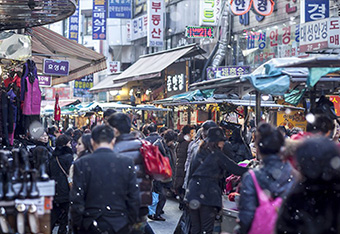
- Namdaemun Market
- Opened in 1964, Namdaemun Market is the largest traditional market in Korea with shops selling various goods. All products are sold at affordable prices and the stores in this area also function as wholesale markets. Most of the goods are made directly by the storeowners. Namdaemun Market is even open overnight, from 11:00pm to 4:00am, and is crowded with retailers from all over the country. When day breaks, the site of busy shoppers bustling around the market creates a unique scene that attracts tourists worldwide. Namdaemun Market sells a variety of clothes, glasses, kitchenware, toys, mountain gear, fishing equipment, stationery, fine arts, accessories, hats, carpets, flowers, ginseng, and imported goods.
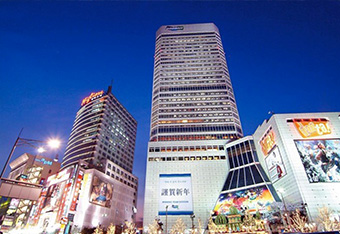
- Dongdaemun Market
- The Dongdaemun Shopping Complex is one of Korea's most representative markets and was founded on December 23, 1970 as the largest of its kind in Asia. In December of 1985, the Dongdaemun Shopping Town was established, and now the area encompasses five buildings in total (A, B, C, D, and the Shopping Town). There are over 5,000 shops located in this district, selling various fabrics, materials, accessories, wedding products, and more. The fabric and clothing here are of the latest fashion trends in the world. Inventory is imported and exported in real time, making Dongdaemun a must-visit fashion market for everyone. Dongdaemun Shopping Complex is one of Korea’s most well-known markets. Information desk, nursing room, bank & ATM, convenience store, rest area, etc.
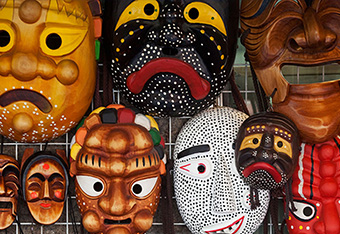
- Insa-dong
- Insa-dong, located in the heart of the city, is an important place where old but precious and traditional goods are on display. There is one main road in Insa-dong with alleys on each side. Within these alleys are galleries and traditional restaurants, teahouses, and cafes. The galleries are the heartbeat of Insa-dong. There are about 100 galleries in the area and you can see every example of traditional Korean fine art from paintings to sculptures. The most famous galleries are Hakgojae Gallery, which functions as the center of folk art, Gana Art Gallery, which promotes many promising artists, and Gana Art Center. The teahouses and restaurants are the perfect complement to the galleries.
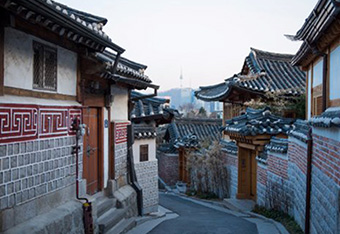
- Bukchon Hanok Village
- Surrounded by Gyeongbokgung Palace, Changdeokgung Palace and Jongmyo Shrine, Bukchon Hanok Village is home to hundreds of traditional houses, called hanok, that date back to the Joseon Dynasty. The name Bukchon, which literally translates to "northern village," came about as the neighborhood lies north of two significant Seoul landmarks, Cheonggyecheon Stream and Jongno. Today, many of these hanoks operate as cultural centers, guesthouses, restaurants and tea houses, providing visitors with an opportunity to experience, learn and immerse themselves in traditional Korean culture. Please book at least 3 days before the desired tour day. Reservation's confirmation: via text message or official website.

- Gyeongbokgung Palace
- Built in 1395, Gyeongbokgung Palace is also commonly referred to as the Northern Palace because its location is furthest north when compared to the neighboring palaces of Changdeokgung (Eastern Palace) and Gyeonghuigung (Western Palace) Palace. Gyeongbokgung Palace is arguably the most beautiful, and remains the largest of all five palaces. The premises were once destroyed by fire during the Imjin War (Japanese Invasions, 1592-1598). However, all of the palace buildings were later restored under the leadership of Heungseondaewongun during the reign of King Gojong (1852-1919). Remarkably, the most representative edifices of the Joseon Dynasty, Gyeonghoeru Pavilion and Hyangwonjeong Pond have remained relatively intact.
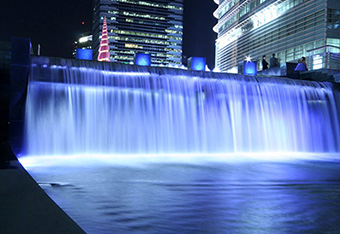
- Cheonggyecheon Stream
- Until it was restored in 2005, Cheonggyecheon Stream existed only as a neglected waterway hidden by an overpass. Today, it has been transformed into a haven of natural beauty amidst the bustle of city life. Narae Bridge, representing a butterfly in flight, and Gwanggyo Bridge, symbolizing the harmony of the past and future, are just two of the more than twenty beautiful bridges that cross the stream. The Rhythmic Wall Stream, lined with fine marble and sculptures, and Palseokdam adorn Cheonggyecheon Stream. Cheonggyecheon Stream passes close to Deoksugung Palace, Seoul Plaza, the Sejong Center, Insa-dong Street, Changdeokgung Palace, and Changgyeonggung Palace, allowing visitors to easily visit major tourist sites after a leisure stroll along the stream.

- Deoksugung Palace
- Located at the corner of Seoul's busiest downtown intersection, Deoksugung Palace is famous for its elegant stone-wall road. It is also the only palace that sits alongside a series of western style buildings that add to the uniqueness of the surrounding scenery. Deoksugung Palace originally belonged to Wolsandaegun (1454-1488), the older brother of King Seongjong (1469-1494) of the Joseon Dynasty. It became a proper palace when Gwanghaegun (1575-1641) ascended to the throne and gave this royal residence the name Gyeongungung Palace in 1611. Over the following decades, the palace alternated between being an official palace and a temporary residence. The name did not official change to Deoksugung Palaces.
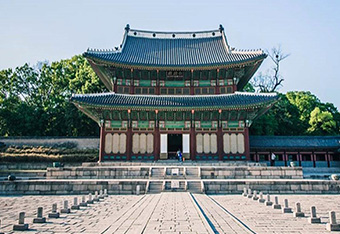
- Changdeokgung Palace and Huwon
- Changdeokgung Palace was the second royal villa built following the construction of Gyeongbukgung Palace in 1405. It was the principal palace for many kings of the Joseon Dynasty, and is the most well-preserved of the five remaining royal Joseon palaces. The palace grounds are comprised of a public palace area, a royal family residence building, and the rear garden. Known as a place of rest for the kings, the rear garden boasts a gigantic tree that is over 300 years old, a small pond and a pavilion. The palace gained importance starting from the time of Seongjong, the 9th king of Joseon, when a number of kings began using it as a place of residence.




